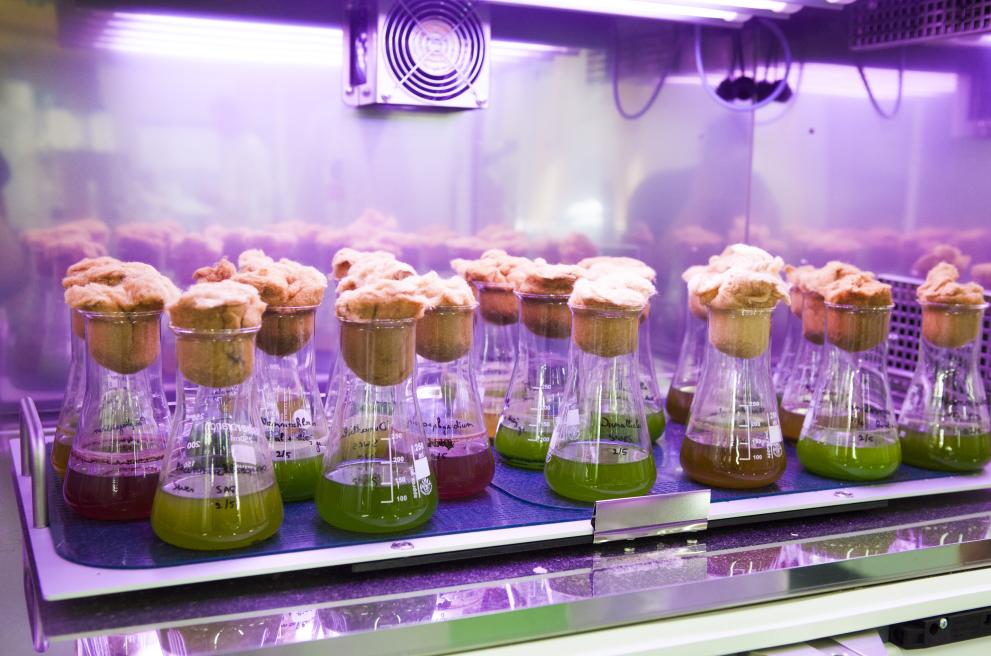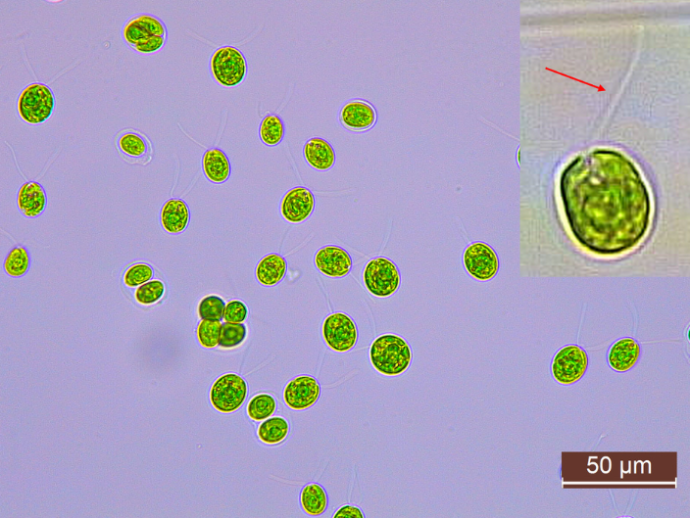

Chloromonas typhlos belongs to the so-called 'snow algae' that are responsible for red spots in snowfields (the 'watermelon' snow effect). C. typhlos can produce various antioxidants, such as astaxanthin (a red carotenoid). These are often produced under stressful conditions like low temperatures, extreme light levels, and increased salt concentrations. The cells can then change color and turn orange to red.
Chloromonas typhlos, also known as Chlamydomonas nivalis, does indeed belong to the green algae. It is a relatively large microalga species, with cells that can grow up to 10 µm in size. The life cycle of this alga is highly complex and involves both sexual and asexual reproduction. During asexual reproduction, zoospores develop within the parent cell wall, which can lead to the formation of large clusters of cells. C. typhlos can also have a motile (mobile) and non-motile phase. In the motile phase, the cells have flagella that allow them to move themselves (see the red arrow in the left photo).

C. typhlos is a winter alga and can therefore survive at very low temperatures. This makes the alga interesting for cultivation in colder regions. The cells can continue to grow at temperatures just above 0°C, although the growth will be slower. However, unlike many other microalgae that are already cultivated, this alga cannot tolerate higher temperatures. It becomes more challenging for C. typhlos to grow at temperatures above 30°C, and the cells start to die off at temperatures above 35°C.
This alga has been studied for over 100 years, primarily from a fundamental perspective and focused on ecological research. Currently, our expertise center is the only one cultivating this alga on a pilot scale.
